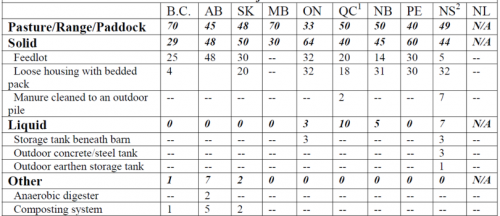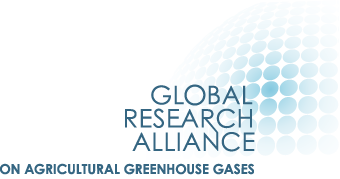Keywords: Manure management | Surveys | Expert judgement
What data needs were addressed? Information on manure management practices.
Why was the data needed? In Canada’s initial inventories in the 1990s, the distribution of manure management practices was estimated using expert judgement by a small number of experts. Some government data was available, but only for a small number of manure management systems and a few livestock types. Improved estimates reflecting the diversity of practices across the country were needed.
Methods used: Surveys of regional experts.
How was the data need addressed? Before designing the survey was designed, it was necessary to define the major manure management practices in the country so that the survey is in line with IPCC definitions of manure management systems as well as reflecting national conditions. This was done by the contracted researcher in collaboration with two manure experts. The survey was then designed and sent to 68 experts in different provinces, including government staff as well as private sector waste management experts. Responses were received from 16 experts. The survey tool asked each person to read the definitions of manure management systems and to indicate the percentage of manure in each system for each type of livestock in their province. Where more than one response was received from the same province, the average value was taken. The survey results were then compared to the existing limited government data, which confirmed the dominant patterns of manure storage methods reflected in the government survey. Table 1 shows the summary results for beef cattle in different provinces.
Table 1: Percent distribution of manure management practices by province for beef cattle

Source: Marinier et al. 2004
Since production systems have not changed significantly, Canada’s inventory continues to use this distribution of manure management practices, combined with annual data on the population of livestock in each province, which changes from year to year. However, academic studies have pointed to some ways in which Canada’s manure management emission estimates could be improved (Vanderzaag et al. 2013).
Further Resources
Marinier M, et al. 2004. Determining manure management practices for major domestic animals in Canada. Environment Canada, unpublished report.
VanderZaag AC, et al. 2013. Towards an inventory of methane emissions from manure management that is responsive to changes on Canadian farms. Environmental Research Letters.
Author: Andreas Wilkes, Values for development Ltd (2019)

